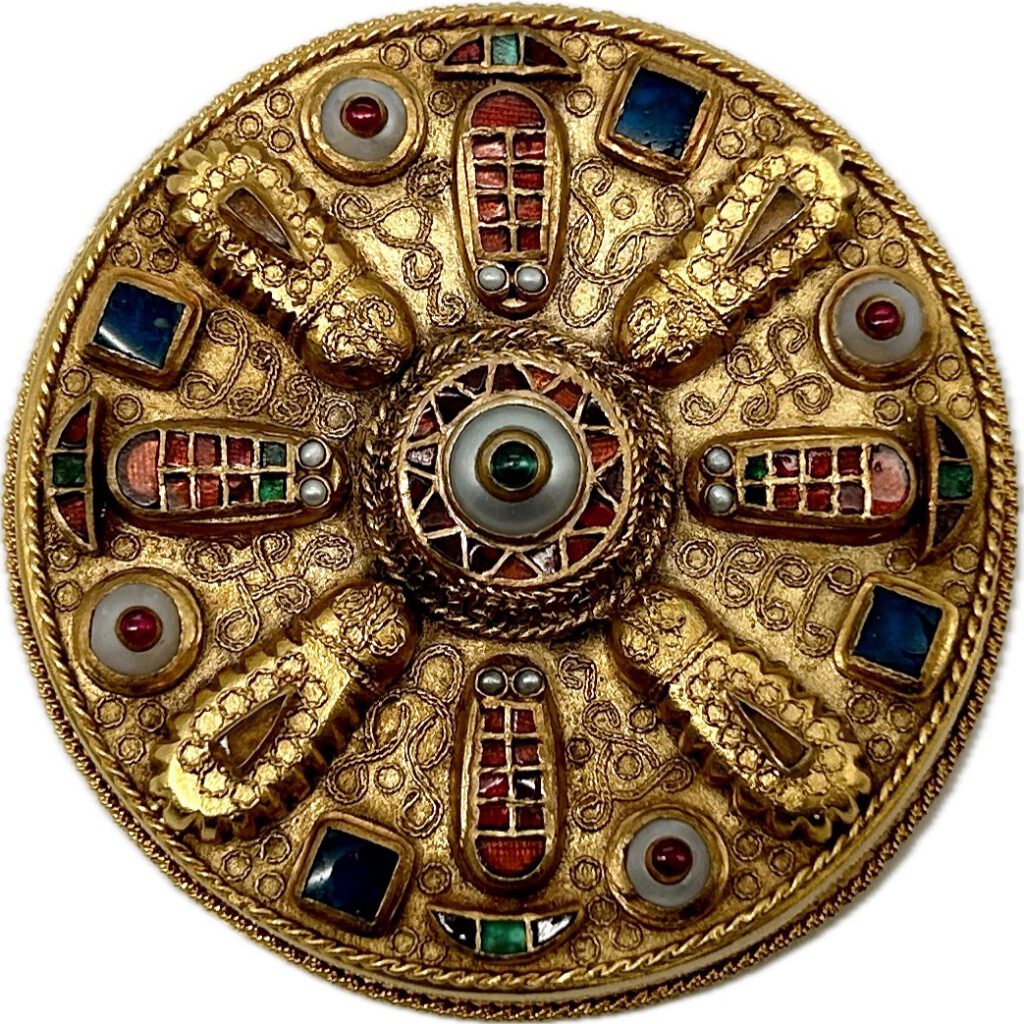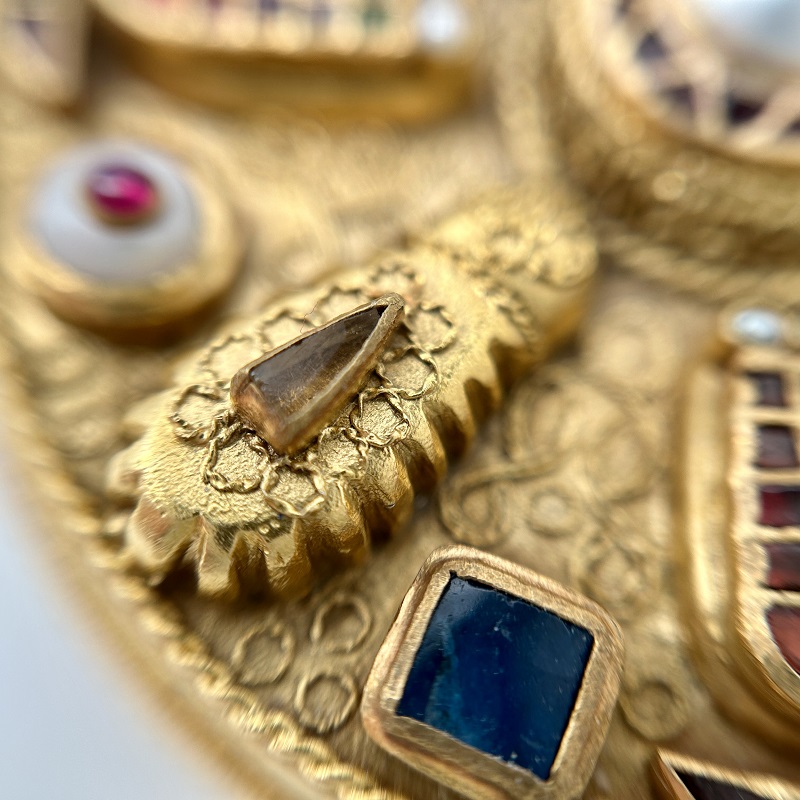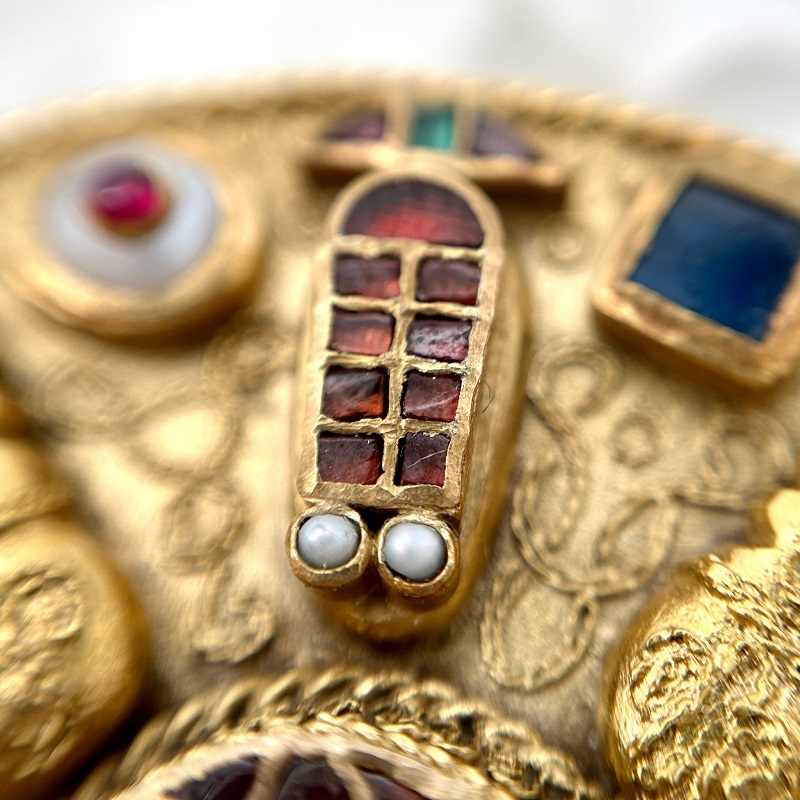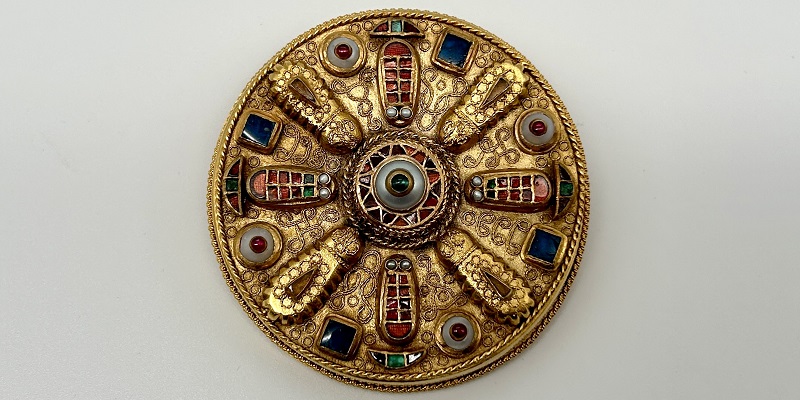With this extraordinary replica of a large, magnificent disc brooch, we are consistently continuing the path we have taken so far - the production of replicas in the style of historical pieces of jewelry in museum quality. In our opinion, this replica once again sets standards for the quality of our medieval brooches in terms of the craftsmanship and the resulting attention to detail.
When I did many years ago the largest and most important antique disc brooch in the Rheinisches LandesMuseum Bonn in the center of the installation the extremely rich fibula treasure of this museum When I saw it for the first time in the display case of the permanent exhibition, it immediately inspired me to make a version of these large and rare magnificent brooches myself in order to combine all the details of this particularly noble type of fibula that I admired so much in a single replica .

The few surviving magnificent medieval gold disc brooches were not only simple pieces of jewelry, but also important cultural and social symbols in the medieval world. These particularly artistic brooches were much more than just practical means of fastening clothing; they represented the wealth, status and power of their owners. Making them required not only skilled craftsmanship, but also a deep understanding of the symbolism and meaning they embodied.
The magnificent gold disc brooches were typically made of precious material such as gold and decorated with gemstones, pearls and enamel. Their size and complexity varied depending on the social status and financial capabilities of the owner. Some brooches were so large and elaborately decorated that they literally looked like small works of art.
The use of gold and precious stones in the magnificent gold disc brooches not only emphasized the wealth of the owner, but also had a deep symbolic meaning. In the Middle Ages, gold was considered the most precious of all metals and was often associated with divine power and immortality. The use of gemstones such as rubies, sapphires and emeralds gave the brooches additional shine and splendor and symbolized wealth, power and spiritual meaning.
In addition, the motifs and decorations on the magnificent gold disc brooches were often of great symbolic importance. Occasionally, religious motifs such as crosses, Christ monograms or depictions of saints were used to emphasize the owner's religious faith and piety. Depictions of animals, plants, insects and mythological figures were also popular motifs and were used to emphasize the owner's connection to nature and the world of legends and myths.

The production of magnificent gold disc brooches was a complex and time-consuming process that required the skill of many different craftsmen. Goldsmiths were responsible for the actual production of the brooches, while enamellers were responsible for the artistic decoration with enamel. Gemstone cutters and pearl threaders also contributed to the often complex decorations. Together they created artistic masterpieces that were considered not only pieces of jewelry, but also status symbols and cultural artifacts.
The importance and appreciation of the magnificent gold disc brooches was also reflected in their use. They were worn not only by nobles and high-ranking members of society, but also by priests, kings and other people in power. They were an important part of medieval costume and were worn on ceremonial occasions such as weddings, coronations and religious ceremonies.
Although many magnificent gold disc brooches have been lost over time or destroyed through looting and raiding, a few examples have survived to this day and are exhibited in museums around the world. Not only do they serve as impressive examples of medieval craftsmanship, but they also tell the stories and legends of their past owners and their time.

In our almost 6 cm large replica, we tried to combine the - from our point of view - most beautiful ornaments from the dozen or so particularly large and magnificent gold disc brooches of this type that we know of in a single brooch.
This resulted in a brooch without a specific historical model, but because of the faithful reproduction of all the details of existing brooches, such as the symbolized insects, the 58 hand-cut almandines, 4 rubies and 8 emeralds, 4 citrines, 5 cultured pearls, 8 seed pearls, the sapphire in the center as well the identical filigree jewelry or the true-to-original waffle foil made of fine gold under the almandines is a real “Queen of the brooches".
By the way: We would be happy to make this brooch entirely out of gold for you. Ask us please just after that...

